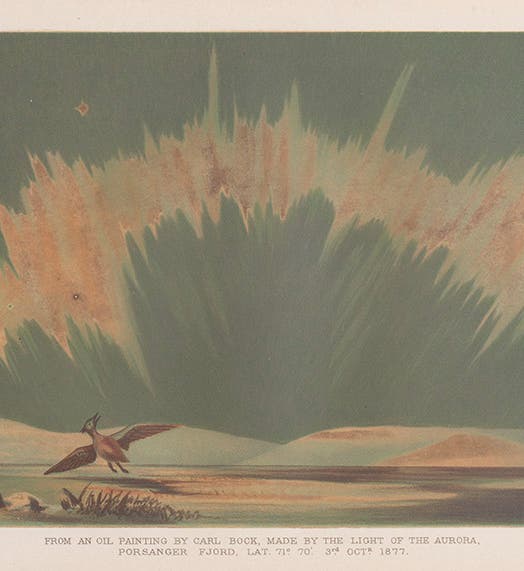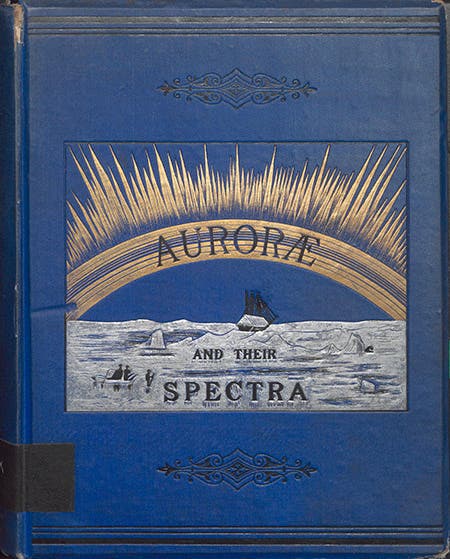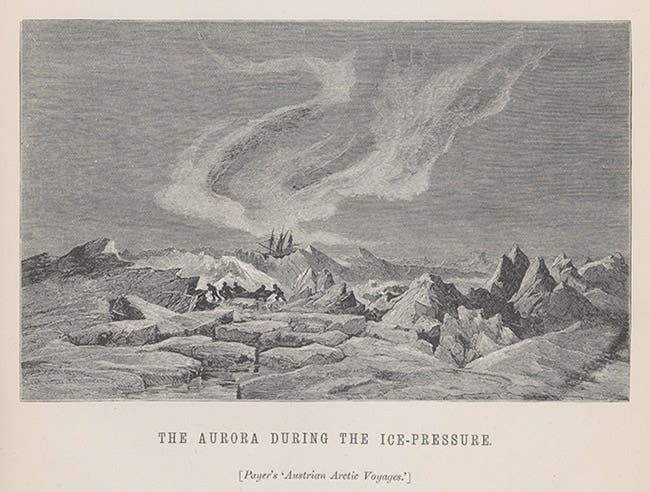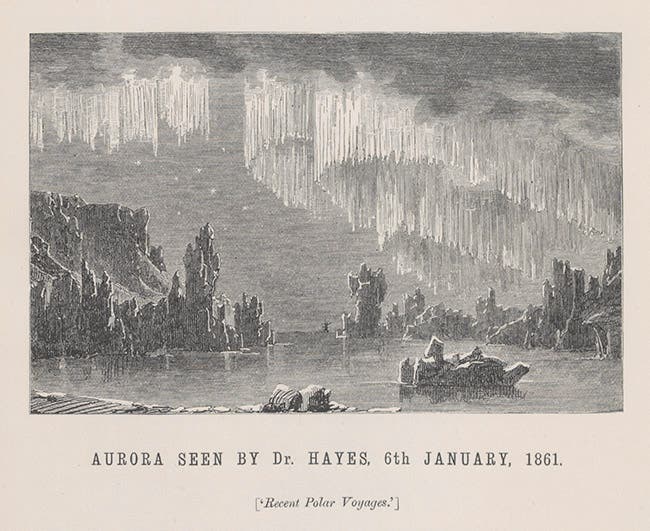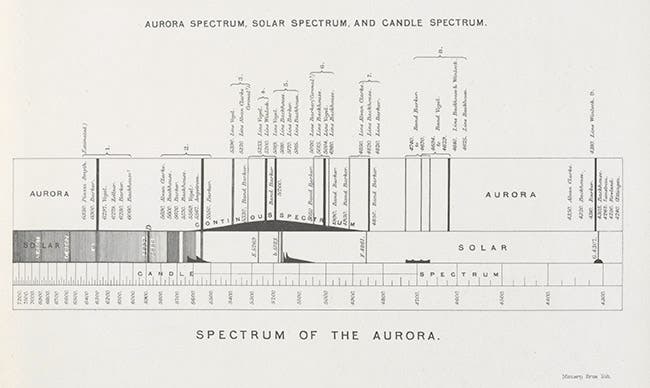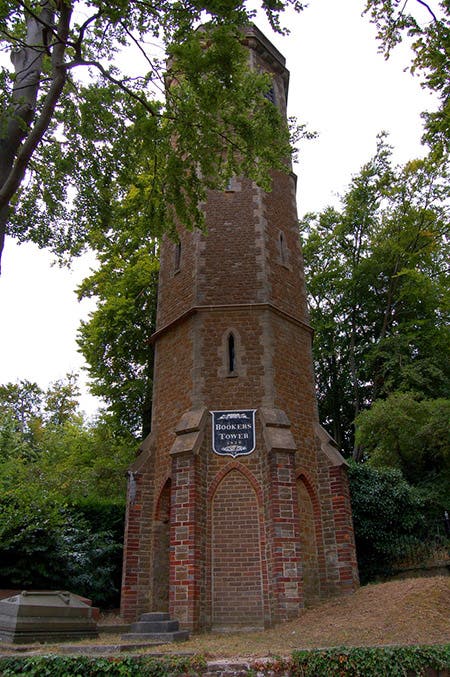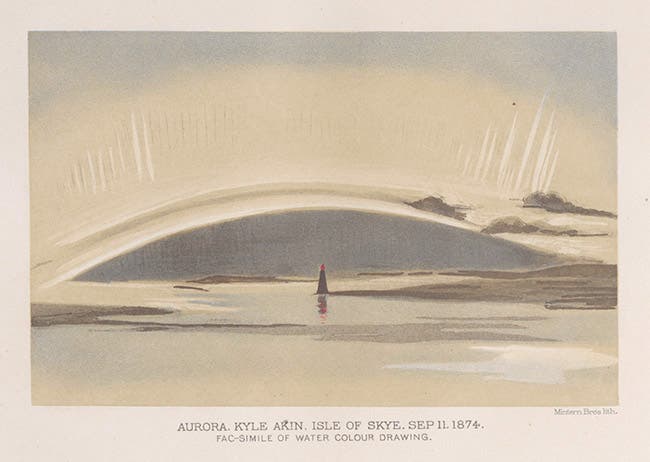Scientist of the Day - John Rand Capron
John Rand Capron, an English solicitor and amateur physical scientist, was born Feb. 19, 1829. In 1879, Capron published the first book devoted to the northern lights, called Aurorae and their Spectra. The book is a handsome quarto, with its blue cover embossed with gold and silver auroras (second image).
The first half of the book is mostly devoted to observations of auroras by others, such as Isaac Hayes, the American arctic explorer of the early 1860s, and Carl Bock, the Norwegian explorer who ventured north in 1877. This section of the book is well illustrated, sometimes with the drawings of others, sometimes with Capron's own sketches. We include here: a wood engraving of an undated event (third image); a wood engraving made from a drawing by Isaac Hayes in 1861 (fourth image); a chromolithograph of an aurora on the Isle of Skye, 1874 (seventh image); and a chromolithograph of a painting by Bock, 1877, that Bock claimed was made using only the light of the aurora (first image).
What raises Capron's book above the level of an exposition of popular science is the second section, which discusses auroral spectra. This reflects a great deal of original research, coupled with a thorough knowledge of spectral analysis done by others. Capron includes a chart that compares the spectrum of an aurora with that of the sun and a candle (fifth image).
Capron also did experiments with Geissler tubes, trying to produce artificial auroras in the laboratory. It is said that for one experiment, he installed a device of platinum wires, for producing an artificial corona, on top of a local landmark, Booker's Tower, and then connected the equipment by wires to his laboratory "nearby." Since we don’t know where that lab was, we show you instead a photo of Booker's Tower as it still stands just to the west of Guildford town center (sixth image). Booker's tower is never referred to as a folly tower, perhaps because it was erected as a memorial to the dead sons of a Guildford mayor, but other folly towers, such as Volta Tower, were built as memorials, so perhaps Booker Tower qualifies. We mention this because one day we will write a post on Thomas Hardy and discuss the connection between Victorian literature, folly towers, and popular astronomy.
We find it interesting that there is no mention that we could find in Capron's book of the great auroral event of 1859, which led to the suspicion by Richard Carrington that auroras are caused by solar flares. We need to do a post on Carrington as well.
Study of the nature and causes of auroras would be taken to a whole new level by the work of Olaf Kristian Birkeland twenty years later. Birkeland we have profiled, here, just two months ago.
Dr. William B. Ashworth, Jr., Consultant for the History of Science, Linda Hall Library and Associate Professor emeritus, Department of History, University of Missouri-Kansas City. Comments or corrections are welcome; please direct to ashworthw@umkc.edu.

